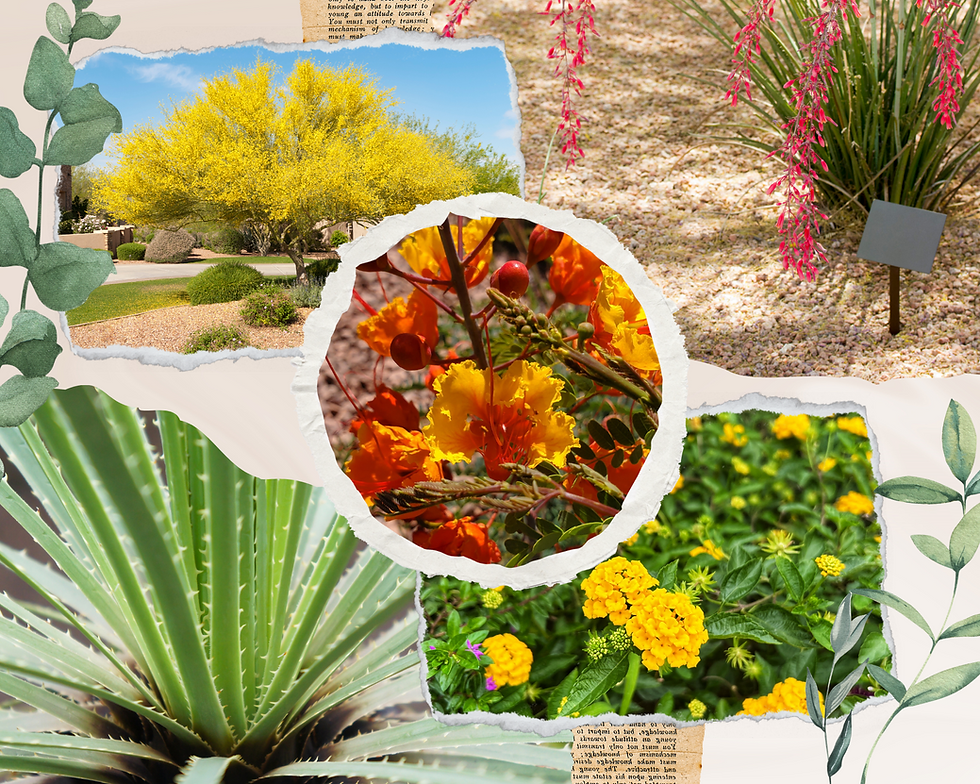The Secret to Healthy, Beautiful Shrubs: Expert Care and Pruning Tips from Tucson Landscaping Pros
- Deborah Munoz-Chacon
- Jun 1
- 2 min read

Last spring, Maria decided it was finally time to give her Tucson backyard a fresh start. The mesquite trees were thriving, and the cacti looked great—but the shrubs were another story. Her once-lush Texas ranger and lantana had become scraggly, full of dead wood, and barely flowered. Determined to fix it herself, Maria grabbed the hedge trimmers and got to work.
By summer, the results were disappointing. The shrubs looked even worse—some had stopped blooming altogether. Frustrated, Maria called in a professional. What she learned surprised her: it wasn’t the watering or the soil that was causing the problem—it was the way and timing of her pruning.
Maria’s story is a common one in Tucson landscapes. Many homeowners don’t realize how much of a difference proper shrub care and pruning can make—especially in the Sonoran Desert.
Why Shrub Care Matters in Tucson
Shrubs are vital to a successful desert landscape. They provide structure, seasonal color, privacy, and habitat for birds and pollinators. But Tucson’s climate is demanding—intense sun, monsoon rains, and temperature extremes mean plants need care that’s adapted to desert conditions.
Without proper maintenance, even the hardiest shrubs can grow leggy, overgrown, or bare. And while pruning may seem simple, it’s one of the most common causes of decline when done improperly.
When and How to Prune Shrubs
Timing is everything. Pruning at the wrong time can reduce blooming or encourage tender new growth that’s vulnerable to frost.
Spring-blooming shrubs like Texas ranger or fairy duster should be pruned after flowering, usually late spring to early summer.
Fall-blooming shrubs like turpentine bush are best pruned in early spring, before new growth starts.
Avoid heavy pruning in late summer or fall to prevent frost damage to new shoots.
Technique matters too. Instead of trimming shrubs into boxy or rounded shapes, we recommend selective pruning. This technique removes entire branches at natural junctions, preserving the plant’s structure and encouraging air flow and healthy inner growth. It also maintains the plant’s natural form, which is more attractive and sustainable in desert landscapes.
Other Shrub Care Tips for Tucson Landscapes
Water deeply and infrequently with drip irrigation to promote deep root systems.
Mulch around the base to help retain moisture and regulate soil temperature—but keep it away from the trunk.
Fertilize lightly, if at all. Most desert-adapted shrubs don’t need much feeding.
Monitor for pests and stress, especially during the hot summer months. Promptly remove dead or damaged branches.
Pruning Resources
Call the Pros
Just like Maria discovered, sometimes a little expert help goes a long way. At Sonoran Oasis Landscaping, our team understands the unique needs of Tucson plants and offers professional shrub care tailored to your landscape.
Ready to bring your shrubs back to life? Call us today at (520) 546-2994 or visit
www.sonoran-oasis.com to schedule a consultation.
Author
Deborah Munoz-Chacon
Sonoran Oasis Landscaping
Certified Arborist Lic # WE-6083A









Comments